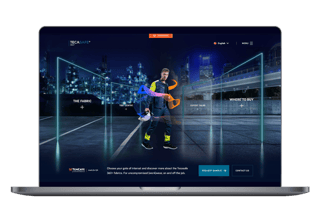With the introduction of stretch in an increasing number of protective fabrics on the market, more industries and end users are embracing–and even demanding–the enhanced comfort afforded by this innovation. Just in the last year, we not only saw more stretch products than ever at trade shows, but we heard the same line from customer after customer: “Don’t bring me anything that doesn’t have stretch in it.”
How is stretch making such a difference across industries? Let’s take a look at utility linemen as an example and how stretch fabrics are enhancing their safety on the job.
Occupational Hazards
Linemen have a dangerous job, with the risk of electrical shocks, burns, falls, and other hazards a constant possibility in the line of their work. That’s why it’s so important that they are properly protected with PPE, including protective garments that can protect them in the event of an emergency.
When your shirt can mean the difference between minor injuries and death, you want to have the right kind of shirt on.
The Lineman Uniform
Many linemen are given an allowance by their employer and purchase their own protective garments through a choice program. Typically, linemen have worn Henley knit shirts, often made of cotton, in addition to the rest of their required PPE (protective gloves, hard hats, proper footwear, etc.). While knits offer a bit of natural give due to the nature of their construction, they tend to wear out faster than woven materials.
Linemen know how often they replace those knit Henley shirts. Wouldn’t it perhaps be more economical over time to buy fewer, more durable garments that last longer than a season, and offer additional benefits?
The Stretch Advantage
A lineman’s range of motion is crucial on the job: they are frequently working from the confines of a bucket on an aerial lift truck with their arms raised above their heads or outstretched, maneuvering long rods, unscrewing components, disconnecting or connecting power, etc.
Wearing restrictive clothing that reduces their range of motion can not only be annoying, but it can also be dangerous, especially if it means they wear their protective garments incorrectly or not at all. Untucked shirttails, unbuttoned buttons, and rolled sleeves all create vulnerabilities in a lineman’s defense against the worst-case scenario.
In the case of untucked shirttails, it is possible to purchase shirts with longer tails, but more fabric means higher cost. Whereas shirts with stretch allow for linemen to reach without their shirts lifting out of their pants and compromising their safety.
Plus, stretch fabric enhances wearer comfort, allowing linemen to work in protective garments that look and feel far more like the clothing they are accustomed to wearing while off the clock. Stretch garments fit better, move with the wearer, and greatly increase the likelihood that workers will wear their protective garments compliantly.
Just as you wouldn’t wear a pair of safety glasses that don’t fit correctly, or a hard hat that sits sideways on your head, your protective workwear should also fit you well. Stretch fabrics are promoting better protection by changing the standards for how protective garments can fit wearers. Ideally, you shouldn’t notice how a piece of PPE feels. Like a good movie soundtrack, it should fit so well that it fades into the background and allows you to focus on your work, not on how your shirt feels.
What to Look For
Interested in making the switch to stretch fabrics in your workwear? Here are some helpful measurements and points to consider when deciding what is worth the increased cost:
- 16% to 18% stretch: This is the stretch percentage at which the fabric is noticeably stretchy, but not too much so—too stretchy can mean less durability.
- 98% recovery: This measures how well the fabric returns to its original shape after being stretched. The higher the recovery, the better, as it is a good indicator of increased durability.
- Industrial laundry durability: Some fibers hold up to the intensity of industrial laundry cycles better than others. Spandex, for example, does not recover as well as other newer options on the market after a few spins in an industrial laundry, or after 15-20 home laundries.
What’s Next in Stretch
At TenCate Protective Fabrics, we are excited for the possibilities stretch affords the protective workwear market in offering more comfortable and ultimately more protective garments. That’s why we’re hard at work both developing new products that incorporate stretch as well as finding ways to add stretch to our existing catalog. Want to learn more about all the stretch products in the marketplace, including what’s coming from TenCate Protective Fabrics next? Get in touch to speak with one of our experts:

.png?width=1080&name=Reaching%20Greater%20Comfort%20with%20Stretch%20in%20Lineman%20Workwear%20(5).png)



.png?width=399&name=Article%20image%20(16).png)

